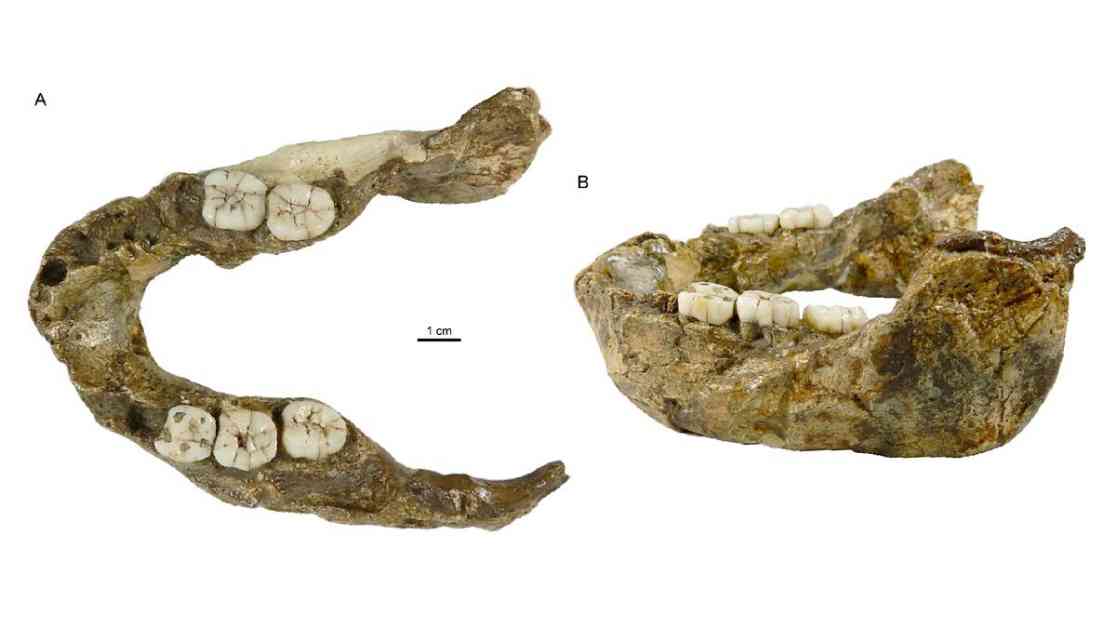Ancient Jawbone Unveils New Human Ancestor
In a groundbreaking study, researchers have uncovered a 1.4 million-year-old fossil jaw belonging to a previously unknown human relative from southern Africa. This newly identified extinct human relative hails from the genus Paranthropus, affectionately dubbed the “nutcracker man” due to its massive jaws and oversized molars. However, the recently discovered Paranthropus species boasts a more petite jawbone and teeth, challenging the accuracy of its famous moniker.
During the era when Paranthropus roamed the Earth, various hominins coexisted, representing species more closely related to humans than to chimpanzees. The emergence of our genus, Homo, dates back at least 2.8 million years, with our species, Homo sapiens, originating around 300,000 years ago. This timeline indicates an overlapping existence between early Homo species and Paranthropus. Prior to this discovery, scientists had identified three Paranthropus species—P. aethiopicus, P. boisei, and P. robustus—dating back between 1 million and 2.7 million years ago.
The focal point of this study revolved around a 1.4 million-year-old jawbone known as SK 15, first excavated in 1949 from a cave at the Swartkrans site in South Africa. This location, rich in Paranthropus fossils and early Homo specimens, offers a unique window into the diversity of hominins and their potential interactions. Lead author of the study, Clément Zanolli, a paleoanthropologist at the University of Bordeaux in France, emphasized the significance of the Swartkrans site in shedding light on human evolution.
Initially believed to belong to a novel species named Telanthropus capensis, SK 15 was later associated with the slender early human species Homo ergaster. However, advanced X-ray scans and 3D modeling revealed that SK 15 likely represents a previously undocumented species of Paranthropus. This groundbreaking revelation marks the first identification of a new Paranthropus species since the 1970s, underscoring the importance of ongoing research in paleoanthropology.
While SK 15’s external structure bears resemblance to Homo ergaster, it exhibits unique features not typical of the Homo genus. The jawbone’s extraordinary thickness and elongated rectangular molars set it apart from any known Homo specimen, prompting researchers to classify it as a distinct Paranthropus species. Further analysis of the internal structure of SK 15’s teeth confirmed this classification, highlighting the distinctive characteristics of this newfound species.
By studying the jaw shape, tooth sizes, and crown and root structures, researchers concluded that SK 15 represents a new Paranthropus species, named P. capensis. This discovery suggests the coexistence of at least two Paranthropus species in southern Africa 1.4 million years ago—P. robustus and P. capensis. The ecological implications of these findings hint at specialized dietary habits within the Paranthropus genus, with P. capensis potentially exploring diverse food resources.
As the research progresses, the question of whether P. capensis represents an evolutionary dead end remains unanswered. The scarcity of early hominin fossil records in Africa presents a challenge in determining the fate of this newfound species. Nonetheless, the groundbreaking discovery of P. capensis opens new avenues for exploring the intricate tapestry of human evolution and the coexistence of diverse hominin species.
In the ever-evolving landscape of paleoanthropology, each new discovery adds a layer of complexity to our understanding of human origins and the intricate web of evolutionary relationships. The unveiling of P. capensis serves as a testament to the ongoing quest to unravel the mysteries of our past, shedding light on the rich tapestry of human evolution and the diverse array of species that once roamed the Earth.










